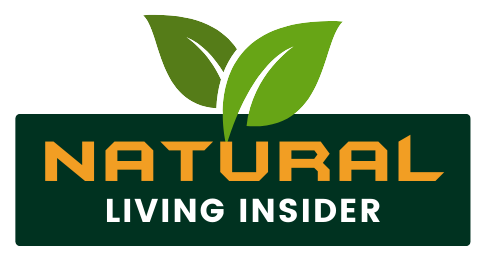
Boost your gut health with these 14 affordable prebiotic foods that support digestion and a balanced microbiome. A healthy gut is the foundation of overall well-being, influencing everything from digestion to immune function and even mental health. Prebiotics are a type of fiber that feed the beneficial bacteria (probiotics) in your gut, helping them thrive and support your digestive system. The best part? You don’t need expensive supplements to enjoy the benefits of prebiotics—many affordable and readily available foods can naturally boost your gut health.
In this guide, we’ll explore 14 budget-friendly prebiotic foods and how they contribute to a healthier digestive system.
Table of Contents
What Are Prebiotics and Why Do You Need Them?
Prebiotics are indigestible plant fibers that act as food for probiotics, the good bacteria in your gut. They help improve digestion, enhance nutrient absorption, and strengthen the immune system. Unlike probiotics, which introduce new bacteria into your system, prebiotics help the bacteria already present in your gut multiply and function effectively.
Key Benefits of Prebiotics
-
Promote a balanced gut microbiome
-
Improve digestion and bowel movements
-
Enhance nutrient absorption
-
Strengthen the immune system
-
Reduce inflammation and improve overall health
Now, let’s explore the best prebiotic-rich foods that won’t break the bank!
14 Affordable Prebiotic Foods for a Healthy Gut
-
Bananas
Bananas, especially when slightly green, contain resistant starch, a powerful prebiotic fiber that feeds healthy gut bacteria. They are also rich in potassium and vitamins that aid digestion.
How to Eat: Add them to smoothies, oatmeal, or enjoy them as a snack.
-
Oats
Oats are packed with beta-glucan, a type of soluble fiber that supports gut health and improves digestion. They also help lower cholesterol and regulate blood sugar.
How to Eat: Enjoy oatmeal for breakfast or add oats to smoothies and baked goods.
-
Garlic
Garlic contains inulin, a potent prebiotic that promotes the growth of beneficial bacteria. It also has antibacterial properties that support immune function.
How to Eat: Use raw or cooked garlic in soups, sauces, and marinades.
-
Onions
Onions are another excellent source of inulin and fructooligosaccharides (FOS), both of which nourish good gut bacteria. They also have anti-inflammatory properties.
How to Eat: Use onions in salads, stir-fries, soups, and sandwiches.
-
Apples
Apples contain pectin, a fiber that supports the growth of beneficial bacteria in the gut. They also help regulate digestion and keep you feeling full longer.
How to Eat: Eat apples raw, add them to salads, or blend them into smoothies.
-
Chicory Root
Chicory root is one of the richest sources of inulin, making it a powerful prebiotic. It also aids digestion and reduces constipation.
How to Eat: Use it as a coffee substitute or add it to herbal teas.
-
Asparagus
Asparagus is a fiber-rich vegetable that promotes the growth of beneficial gut bacteria while also being packed with antioxidants.
How to Eat: Grill, roast, or steam asparagus and add it to salads or pasta dishes.
-
Flaxseeds
Flaxseeds contain both soluble and insoluble fiber, making them excellent for gut health. They also have anti-inflammatory properties.
How to Eat: Add ground flaxseeds to smoothies, oatmeal, or yogurt.
-
Barley
Barley is a whole grain that contains beta-glucan, a prebiotic fiber that enhances gut health and improves digestion.
How to Eat: Use barley in soups, stews, or as a rice substitute.
-
Lentils
Lentils are rich in fiber and resistant starch, which act as prebiotics to nourish good bacteria in your gut.
How to Eat: Add lentils to soups, curries, or salads.
-
Cabbage
Cabbage is a low-cost vegetable that supports gut health due to its high fiber content. Fermented cabbage (like sauerkraut) provides both prebiotics and probiotics.
How to Eat: Enjoy cabbage raw in salads or fermented as sauerkraut.
-
Leeks
Leeks are closely related to onions and garlic and contain inulin, a powerful prebiotic that aids digestion and strengthens gut bacteria.
How to Eat: Use leeks in soups, stews, or stir-fries.
-
Carrots
Carrots are not only a great source of beta-carotene but also contain fiber that supports gut bacteria.
How to Eat: Eat raw carrots as a snack, add them to salads, or roast them for a delicious side dish.
-
Sweet Potatoes
Sweet potatoes are packed with fiber, vitamins, and antioxidants that support gut health and digestion.
How to Eat: Roast, mash, or add them to soups and stews.
How to Incorporate More Prebiotic Foods Into Your Diet
Adding prebiotic-rich foods to your diet doesn’t have to be complicated. Here are a few easy ways to enjoy them daily:
- Start your day with oatmeal topped with banana slices and flaxseeds.
- Use garlic and onions in most of your cooking for added flavor and gut benefits.
- Snack on raw carrots or apples with peanut butter.
- Add lentils and barley to soups and stews.
- Roast sweet potatoes and asparagus for a tasty side dish.
By making small, affordable changes to your diet, you can nourish your gut and improve your overall health naturally.
Final Thoughts
Prebiotics are essential for a thriving gut microbiome, and the best part is that they don’t have to be expensive. By incorporating these 14 budget-friendly foods into your meals, you’ll be giving your gut bacteria the fuel they need to keep you healthy.
Want to take your gut health to the next level? Pair these prebiotic foods with probiotic-rich options like yogurt, kimchi, and kefir for maximum benefits.
Start your journey to better digestion and overall wellness today! 🌱💪



